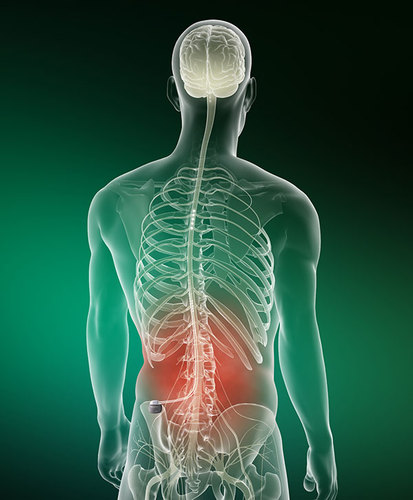
A study presented at the International Neuromodulation Society 12th World Congress (6–11 June, Montreal, Canada) showed that hospitalisation costs for a set of pain patients at the Vancouver Island Health Authority fell after receiving spinal cord stimulation treatment.
The study was initiated by the health authority’s interdisciplinary pain programme. British Columbia’s Ministry of Health had funded a 160% increase in the number of spinal cord stimulation (SCS) implants annually for several years. In turn, the ministry requested patient-reported outcome measures, said Carla Service, authority manager of the regional pain programme at Royal Jubilee Hospital, Canada.
The pain programme created a neuromodulation patient database in 2010 of patients who received SCS implants from 2007 to the present, which tracked baseline measures as well as functional and clinical outcome measures. Patients who received their implants from 2008 to 2013 were asked to participate in a research study that used the database and Ministry of Health data to assess patient outcome. Forty patients (a 40% response rate) participated. Eleven of the patients also reported functional outcomes.
The study was presented by principal investigator Nouri Najjar, a PhD student in economics at the University of British Columbia, Canada.
Mean annual expenditures increased in each of the three years before SCS treatment, and decreased in each of the three years after, Najjar, said, with hospitalisation more probable prior to SCS. Trends in hospitalisation contributed to changes in the overall expenditures.
Total mean expenditures fell by 29% overall, he said, when all three years before treatment and all three years after were compared. Comparing all three years before and after treatment, pharmaceutical costs went down by 31% and non-pharmaceutical costs went down by 29%.
As the study was underway, Krishna Kumar, of the Division of Neurosurgery at the Regina General Hospital, was co-authoring a paper published in 2014 in Neuromodulation: Technology at the Neural Interface that summarised his earlier findings in which data from 15 years or more indicate that effective pain management from SCS is inversely proportional to wait times.
Najjar’s fellow researcher on the project, physician investigator Alan Berkman, of Nanaimo Regional General Hospital, mentioned Kumar’s long-term findings when describing the value of the current study.
“This research is a very useful tool to show the funding authority that neuromodulation saves money in the short term with regards to overall health care dollar costs,” Berkman said. “It has been shown to continue to save money after this period by Kumar. It confirms the value of this very important modality in the treatment of patients suffering with pain.”
For the 11 patients who reported functional outcomes, Najjar found they had statistically significant post-procedure improvements in all functional measures except the Tampa Scale for kinesiophobia.
In his 2014 paper, Kumar and colleagues wrote that SCS success has come to be considered an improvement in functional outcome more than strictly a reduction in the perception of pain, which is “now regarded as highly variable and subjective, arbitrary, and a poor correlate of a patient’s quality of life.” Instead, the focus has shifted to how SCS permits patients to resume activities of daily life and participate in work, domestic pursuits, or social endeavors. “Ultimately, it is on this metric that SCS therapy should be judged by patients, society, and payers alike,” Kumar and colleagues state.
They add that the cost-effectiveness of SCS is demonstrated in studies that show post-implant healthcare savings offset the initial expenditure of an SCS implant, with implantation within two years of symptom onset appearing to offer the greatest success rate.













